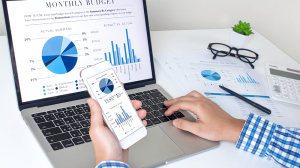
The fast-paced world of healthcare requires efficiency. Innovative medical billing apps have transformed medical billing operations using current technologies. These apps have transformed medical billing, saving time and streamlining the process. Healthcare practitioners and medical billing professionals use these apps to reduce administrative burdens and errors.
Automation of Repetitive Tasks
One of the biggest benefits of current medical billing systems is their ability to automate monotonous activities. Medical billing used to include manual data entry, claim submission, and payment posting. Many of these procedures can now be automated with medical billing software, saving time and effort. The medical billing app can automatically enter patient information, verify insurance eligibility, and produce claims, freeing up healthcare providers to focus on patient care.
Simplified Claim Submission
Medical billing relies on claim submission, but it can be time-consuming and error-prone. Modern medical billing tools make claim filing faster, easier, and less error-prone. Some apps have built-in claim scrubbing functions that review claims for flaws and inconsistencies before submission, decreasing claim rejections and denials. Many apps allow providers to submit claims directly to payers online, speeding up the process.
Real-Time Eligibility Verification
Manually verifying patient insurance coverage is time-consuming for accurate invoicing. Medical billing software allows real-time eligibility verification of patients’ insurance and benefits before providing treatments. This saves time and avoids insurance claim denials. These applications update patient eligibility information allowing doctors to make treatment and billing decisions by integrating with payer systems.
Integration with EHRs
Modern medical billing software works well with EHRs. Apps that link with EHR systems instantly move patient demographic and clinical data to the billing system, eliminating duplicate data entry. This connection reduces data entry errors, saving time and enhancing accuracy. All patient data is accessible through one interface, simplifying workflows and enhancing efficiency.
Centralized Billing Dashboard
Dashboards summarize the billing process in many medical billing software. Instead of switching systems, providers can follow claim status and post payments from a dashboard. This unified strategy helps providers detect and fix bottlenecks faster by increasing visibility and openness. Detailed data and insights from personalized reporting systems help providers manage revenue cycles.
Mobile Accessibility
Modern medical billing software save time by being mobile-friendly. Many apps offer mobile or companion apps for providers to rapidly manage billing tasks. Smartphones and tablets help providers check patient eligibility, submit claims, and track payment status anytime, anywhere. This flexibility helps providers work remotely, saving time and optimizing process.
Conclusion
Finally, contemporary medical billing software have transformed healthcare by reducing time. These programs have improved medical billing efficiency and accuracy by automating tedious procedures and streamlining claim submission. Healthcare providers may focus on patient care and timely, accurate compensation by simplifying billing operations using technology. Medical billing software can help healthcare firms improve efficiency and financial performance as the industry evolves.



